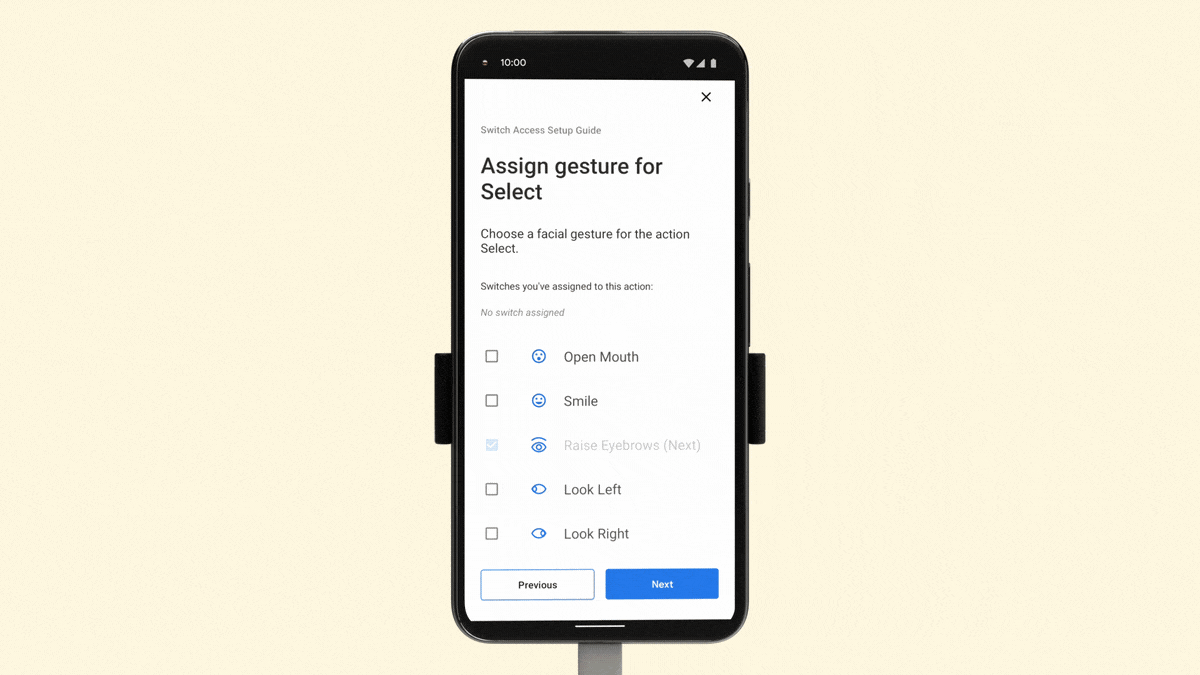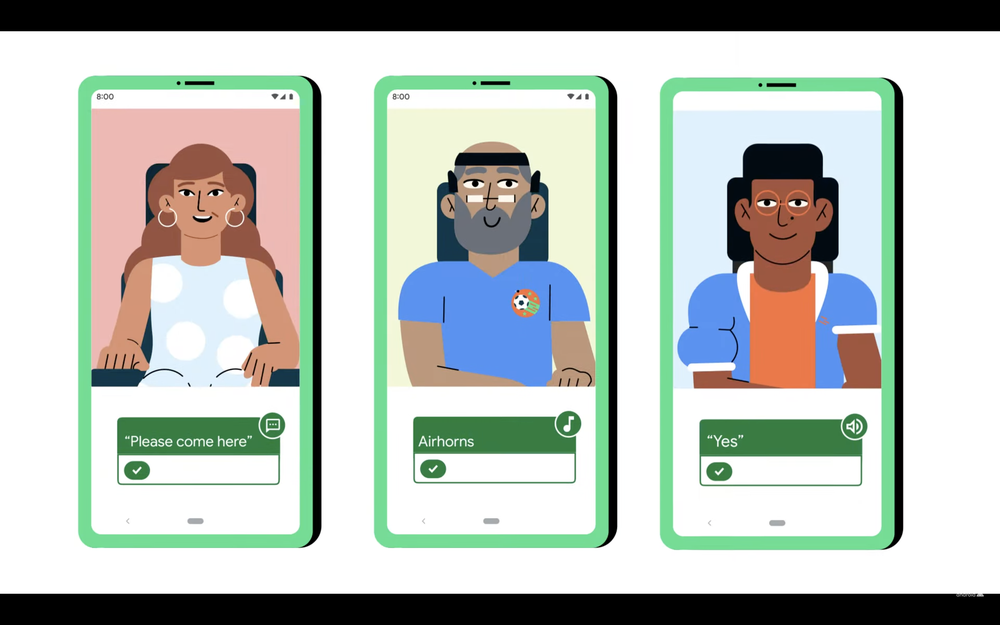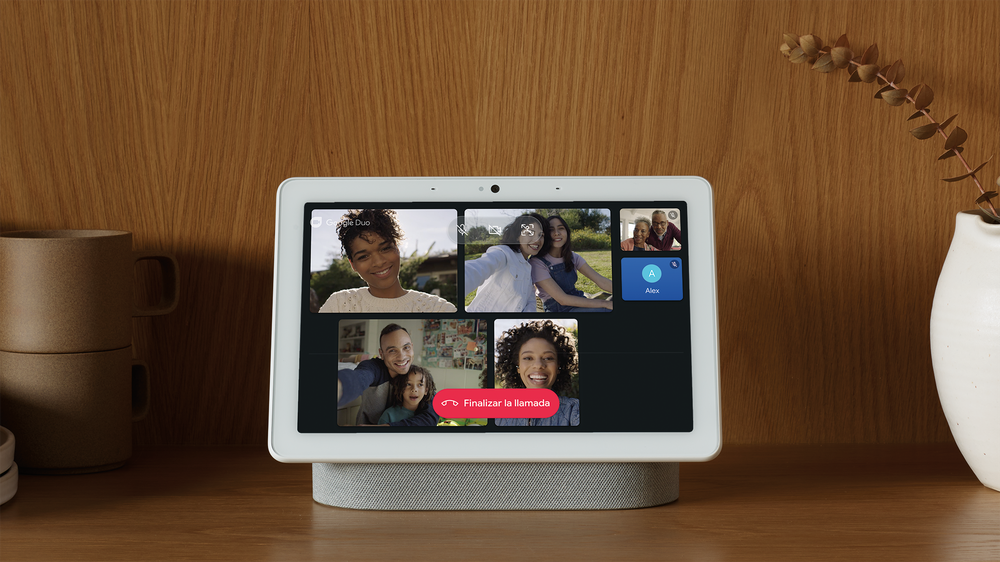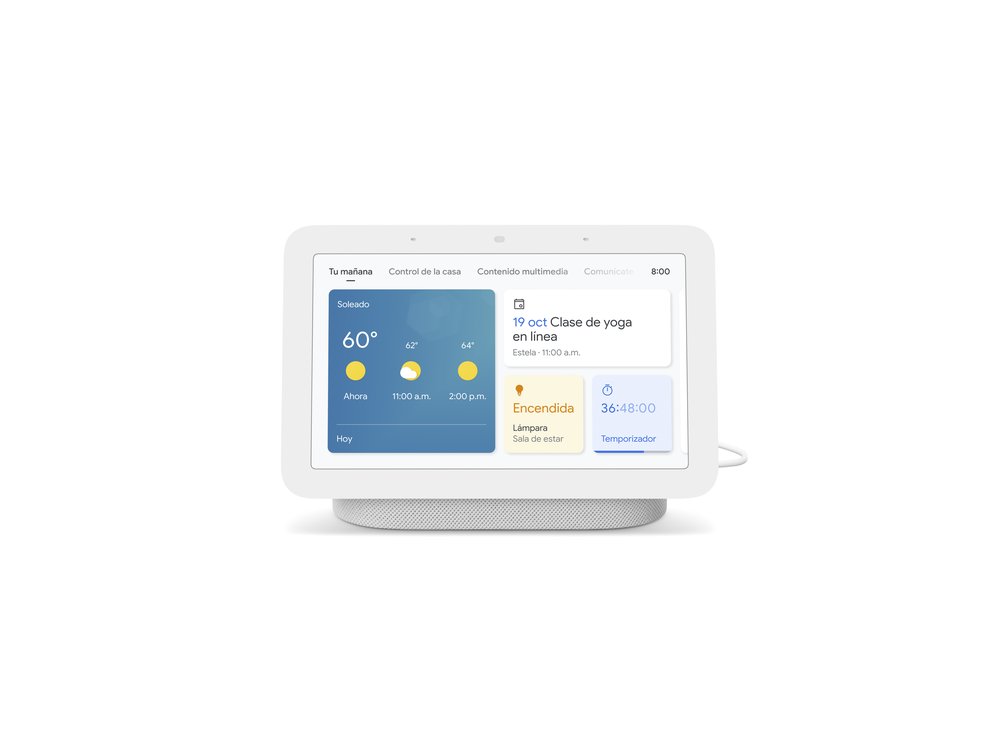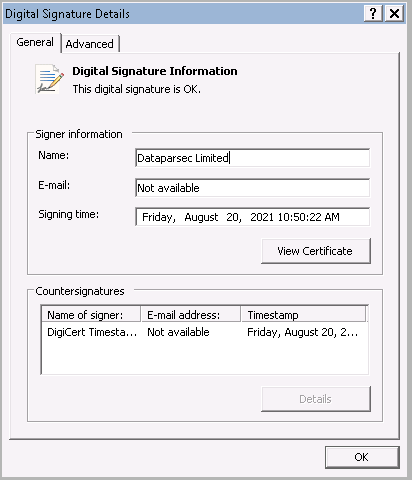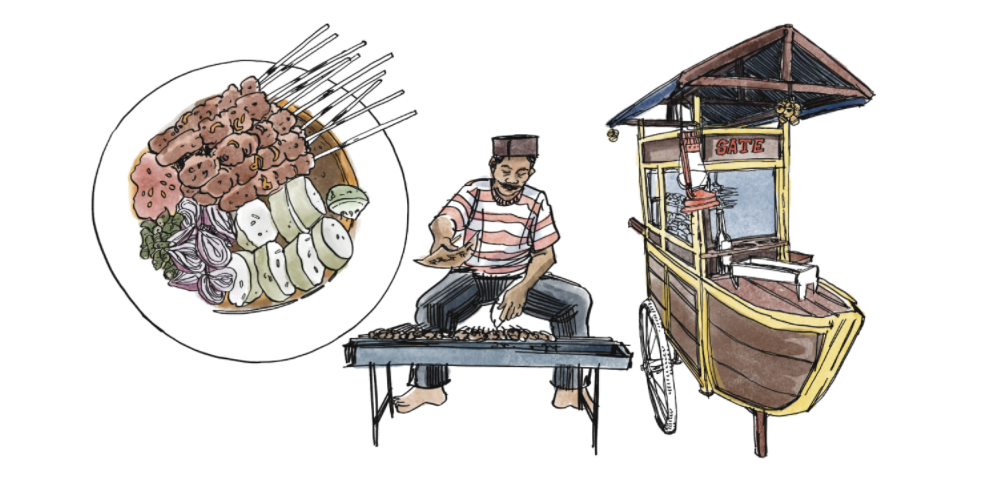With Android, you can look forward to your device getting better and better throughout the year. From accessibility to Android Auto to features that make your life just a little easier, like Assistant and Gboard, we’re rolling out new features that help you do more, stay secure and have more fun with your Android phone.
Camera Switches [left] and Project Activate [right]
Control your phone with your facial gestures
Inspired by people with motor and speech disabilities, Camera Switches and Project Activate are two new accessibility features that let you use your phone by making facial gestures. Beginning to roll out this week, Camera Switches is a feature within Android Accessibility Suite that turns your front-facing camera into a switch (an adaptive tool that replaces a keyboard, mouse, or touching the phone screen) so that you can navigate your phone. Project Activate is a new app that makes it easier to communicate and express yourself in the moment. You can use facial gestures and eye movements to activate preset actions like speaking a phrase (like "Wait!"), playing audio (like a laugh) or sending a text message (like "Please come here").
Also new in accessibility, we’re bringing handwriting recognition to Lookout, an app that uses your phone’s camera to assist people with low vision or blindness get things done faster and more easily. In Documents mode, Lookout will now read out both handwritten and printed text for Latin-based languages. Also, in response to Lookout’s growing global audience, we are adding Euro and Indian Rupee recognition within Currency mode, with more on the way.
Control your TV with your phone
Starting today, you can find something great to watch on your Google TV even when the couch has eaten your remote. We’ve built remote-control features directly into your Android phone so you can power on your TV, navigate through your recommendations or even start up your favorite show right from your phone. And you can use your phone’s keyboard to quickly type complicated passwords, movie names or search terms. Try it on your Google TV or other Android TV OS devices by adding the remote tile to quick settings on your Android phone, or by visiting the Google TV app — coming to 14 more countries over the next few weeks.
Manage day-to-day tasks using Reminders from Assistant
Keeping track of everyday to-dos is even easier with Reminders. You can now manage all your reminders in one place by saying, “Hey Google, open my reminders" where you'll also see helpful suggestions for recurring reminders that you can activate with a tap. And of course, you can continue to use your voice to create and automate your to-dos. Just say, “Hey Google, remind me to water the plants every morning.” Once set, Google will notify you at the perfect moment across your devices, whether you’re at home or on the go.
Stay entertained, connected and on track during your drive
With Android Auto, you can stay entertained by quickly launching and listening to your favorite music, news and podcasts with personalized recommendations from Google Assistant. You can also play a variety of games from GameSnacks while you’re parked waiting for a to-go order or charging your car.
And for commuters, Android Auto can help you stay on top of important work meetings and messages with new support for your work profile. Plus, if you’re a dual-SIM Android phone user, you can now choose which SIM card to use when making calls through Android Auto.
To help you stay on track, Waze on Android Auto is also getting a refresh to create a more streamlined navigation experience. The new design includes touchpad support, night mode and lane guidance support, and puts the map and directions at the forefront so other elements aren’t in the way. With Waze, Google Maps and many more navigation apps, Android Auto makes it easy to get to where you need to be.
These Android Auto features will be available soon on Android phones when connected to a compatible car. If you don’t have a compatible car, you can check out other ways Google can help on your drive including new updates to Google Assistant driving mode and more on your Android phone.
Add photos and videos to a passcode-protected space
Previously on Pixel only and rolling out soon to Android, Locked Folder in Google Photos gives you a passcode-protected space to save photos and videos separately, so they won’t show up as you scroll through Google Photos or any other apps on your device.
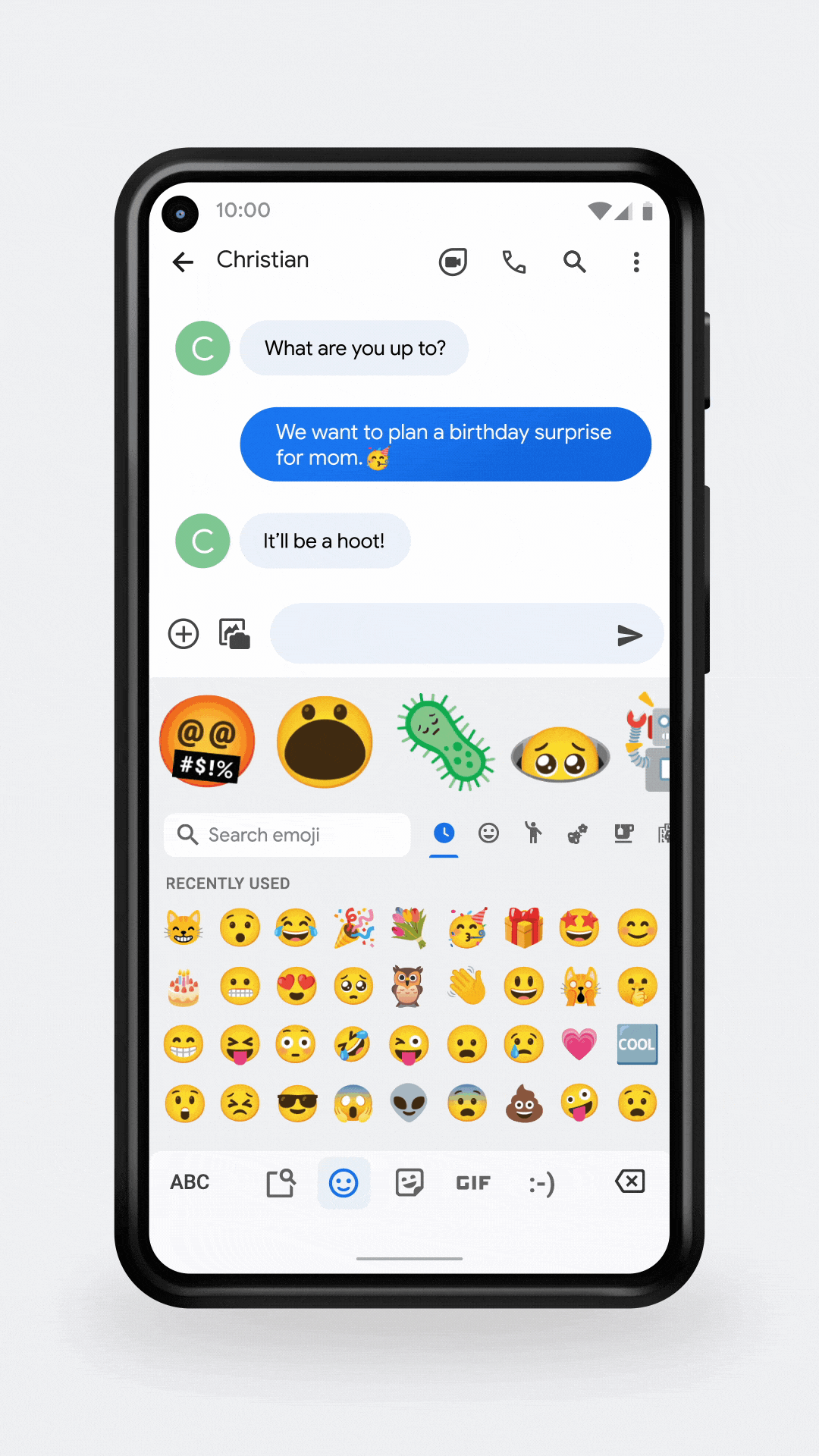
Express yourself with Gboard
Express how you really feel with new additions to Emoji Kitchen on Gboard. With over 1,500 stickers coming this fall, you’ll be able to create even more combinations of your favorite emoji like ????.
In addition to making your messages more fun, Gboard is also helping you communicate faster and more fluidly with new features.
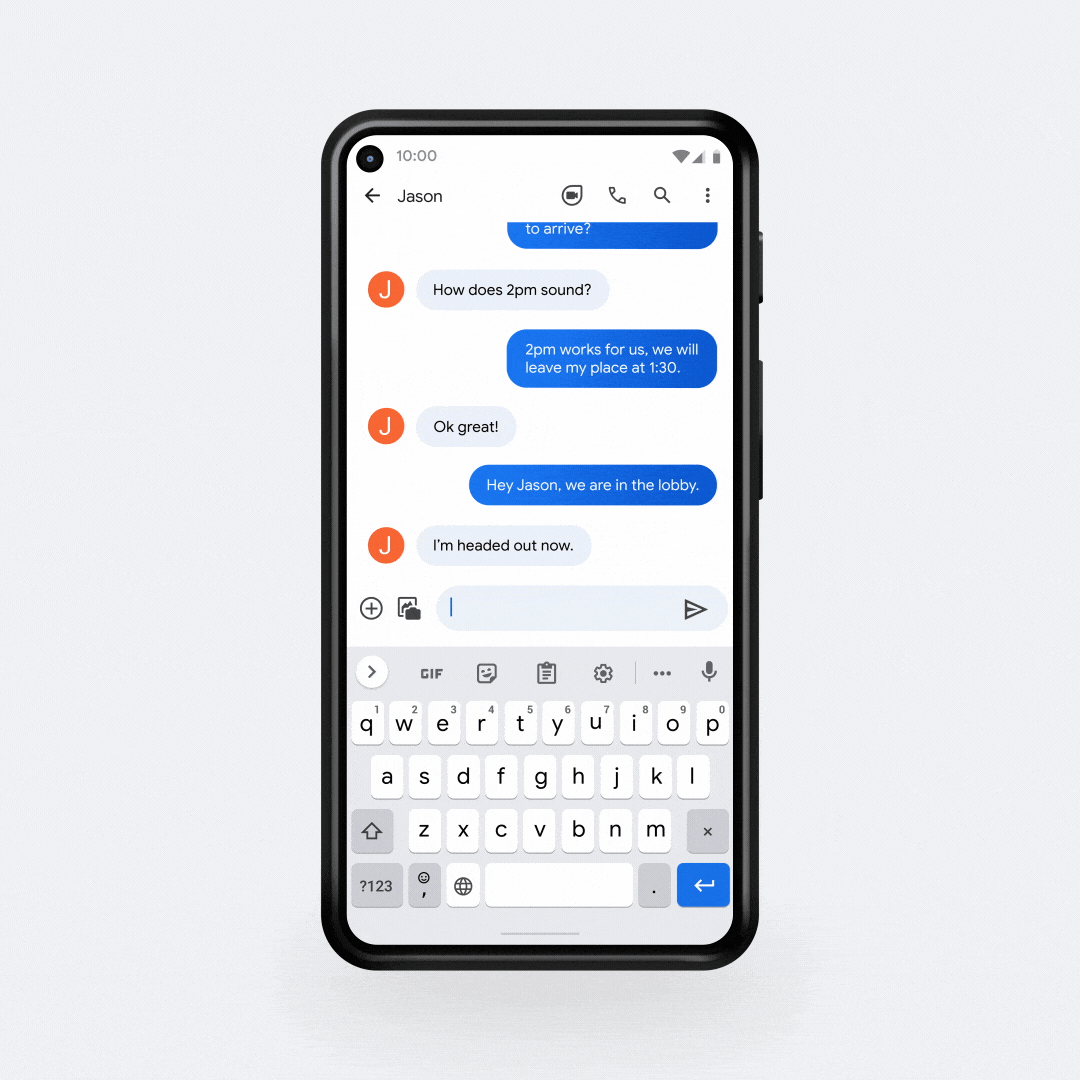
First, when you copy text that includes multiple information like phone numbers, email addresses and URLs, Gboard will automatically extract and separate them into multiple pasting options, so you can choose the information that is most important to you. Second, when you open a messaging app right after taking a screenshot, Gboard will now show that screenshot as a suggestion to share. And finally, for devices running Android 11 or newer, the power of machine learning lets you quickly complete your sentences with just a swipe with Smart Compose.
Control who shares with you
With improved visibility settings in Nearby Share, you can take full control of who can discover your device and send files. Choose between everyone, your contacts, or no one, and you can easily change your preference through your phone’s Quick Settings space anytime.And wait, there’s more
With the Heads Up feature, you can get reminders to look up and stay alert when you’re walking and using your phone. Launched first on Pixel earlier this year, Heads Up is now available through the Digital Wellbeing setting on devices running Android 9 and newer.
We can’t wait for you to try out all these features. Learn more about each at https://www.android.com/google-features-on-android/fall-2021/.




